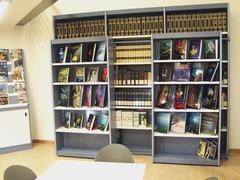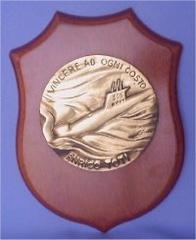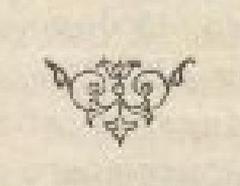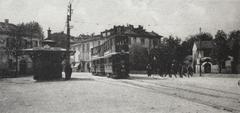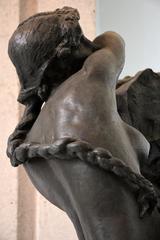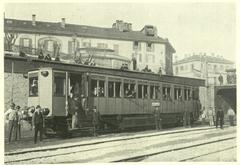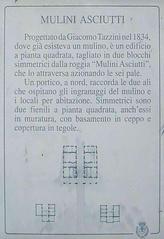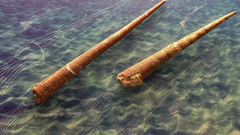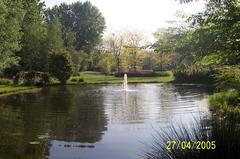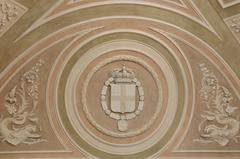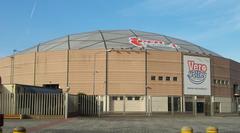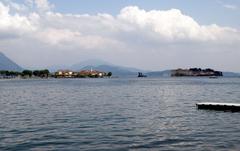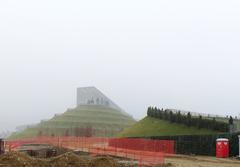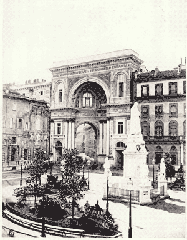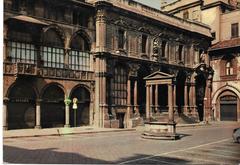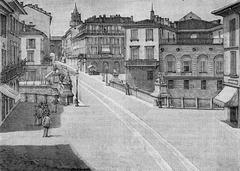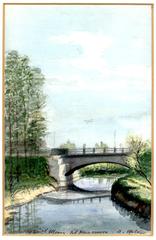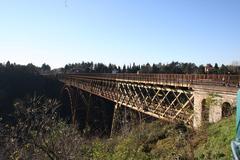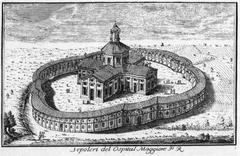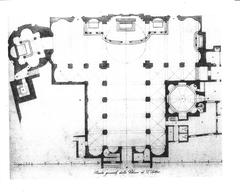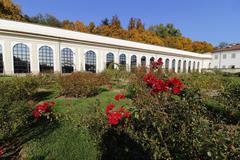Via Burago Visiting Hours, Tickets, and Historical Sites in Monza, Italy
Date: 31/07/2024
Introduction
Via Burago, nestled in the historic city of Monza, Italy, provides visitors with a unique opportunity to explore a rich tapestry of history and culture. Monza, a city with roots tracing back to the 3rd century BC, has evolved through various historical epochs, from being a significant settlement for the queens of Lombardy to serving as a military headquarters (The Crazy Tourist). The Royal Villa of Monza, a central highlight near Via Burago, stands as a testament to the region’s illustrious past, commissioned by Empress Maria Theresa of Austria in the late 18th century and serving notable figures throughout history such as Archduke Ferdinand of Austria and Eugène de Beauharnais during the Napoleonic era (Wikipedia). Today, the villa and its surrounding parklands, one of the largest enclosed parks in Europe, offer a serene escape filled with neoclassical architectural wonders and cultural events (Turismo Monza). Whether you’re a history enthusiast, architecture aficionado, or a cultural explorer, Via Burago and the Royal Villa of Monza promise a memorable journey through time.
Table of Contents
Historical Background
Origins and Early History
Via Burago, located in Monza, Italy, is steeped in a rich historical tapestry that dates back to ancient times. Monza itself has been a significant settlement since the 3rd century BC, serving as a summer residence for the queens of Lombardy and later as a military headquarters during various periods (The Crazy Tourist). The strategic location of Monza, just 15 kilometers north-northeast of Milan, made it an important hub in the Lombardy region.
The Habsburg Influence
The construction of the Royal Villa of Monza, commissioned by Empress Maria Theresa of Austria in the late 18th century, marked a significant period in the history of Monza. The villa was intended as a summer residence for Archduke Ferdinand of Austria, the governor of the Duchy of Milan. The choice of Monza was influenced by its salubrious air and scenic countryside, as well as its symbolic position between Vienna and Milan (Wikipedia).
Napoleonic Era
During the Napoleonic Kingdom of Italy, the Royal Villa of Monza became the residence of the viceroy, Eugène de Beauharnais. Significant architectural enhancements were made under the direction of architect Luigi Canonica, including the construction of a theatre in the north wing and the expansion of the villa’s gardens. The creation of Monza Park, one of the largest enclosed parks in Europe, was a notable development during this period (Wikipedia).
Austrian and Savoy Periods
Following the fall of the First French Empire in 1814, Monza was annexed by Austria and became part of the Kingdom of Lombardy-Venetia. The Royal Villa continued to serve as a residence for Austrian viceroys, including Archduke Rainer Joseph of Austria. However, with the unification of Italy and the establishment of the Kingdom of Italy under the House of Savoy, the villa’s role as a royal residence diminished. It was eventually abandoned by the royal family after the assassination of King Umberto I in 1900 (Wikipedia).
20th Century Developments
In the early 20th century, the Royal Villa and its surrounding parklands underwent significant changes. In 1934, King Victor Emmanuel III donated most of the villa to the municipalities of Monza and Milan. The villa and park are now managed by a consortium, which oversees their preservation and use for cultural and public events (Wikipedia).
Post-War Era and Restoration
The aftermath of World War II saw the Royal Villa fall into a state of disrepair. However, extensive restoration efforts began in 2012, focusing on the central body, north and south wings, and the Courtyard of Honor. These efforts aimed to restore the villa to its former glory and adapt it for contemporary use, including hosting temporary art exhibitions and cultural events (Wikipedia).
Modern-Day Significance
Today, Via Burago and the Royal Villa of Monza stand as testaments to the city’s rich historical legacy. The villa hosts various exhibitions and events, contributing to Monza’s cultural and tourism landscape. The annual fireworks show on June 24th, in conjunction with the feast of San Giovanni Battista, is a notable event that attracts visitors to the villa and its expansive park (Wikipedia).
Architectural Highlights
The Royal Villa of Monza is an architectural marvel, showcasing neoclassical design elements. Originally built by Giuseppe Piermarini between 1777 and 1780, the villa features elegant facades, grand halls, and meticulously landscaped gardens. The theatre in the north wing, added during the Napoleonic era, is a highlight of the villa’s architectural heritage (Wikipedia).
Cultural and Educational Role
In addition to its historical and architectural significance, the Royal Villa of Monza plays an important role in education and cultural preservation. A wing of the villa houses the Artistic High School of Monza, fostering the next generation of artists and cultural practitioners. The villa’s consortium collaborates with universities and research institutes to promote the safeguarding and enjoyment of cultural assets and landscapes (Wikipedia).
Visitor Information
Ticket Prices and Opening Hours
- Ticket Prices: Prices vary depending on the type of visit, ranging from general admission to guided tours. Check the official website for the latest prices.
- Opening Hours: The villa is typically open from 10:00 AM to 6:00 PM, but hours may vary depending on the season and special events. Visit the official website for current information.
Special Events and Guided Tours
- Annual Fireworks Show: Held on June 24th in conjunction with the feast of San Giovanni Battista.
- Guided Tours: Available daily, offering in-depth insights into the villa’s history and architecture. Booking in advance is recommended.
Visitor Tips
For visitors to Via Burago and the Royal Villa of Monza, there are several tips to enhance the experience:
- Plan Ahead: Check the villa’s official website for information on current exhibitions and events.
- Guided Tours: Consider taking a guided tour to fully appreciate the historical and architectural details of the villa.
- Explore the Park: Allocate time to explore Monza Park, which offers walking trails, scenic views, and historical landmarks.
- Cultural Events: Attend cultural events such as the annual fireworks show or art exhibitions to experience the villa’s vibrant cultural scene.
FAQ
What are the visiting hours for the Royal Villa of Monza?
The villa is open from 10:00 AM to 6:00 PM, but hours may vary. Check the official website for the latest information.
How much do tickets to the Royal Villa of Monza cost?
Ticket prices vary depending on the type of visit. General admission, guided tours, and special events each have different pricing. Refer to the official website for current prices.
Conclusion
Via Burago and the Royal Villa of Monza offer a rich historical and cultural experience for visitors. From its origins as a royal residence to its modern-day role as a cultural hub, the villa stands as a symbol of Monza’s enduring legacy. Whether exploring its architectural marvels or participating in cultural events, visitors are sure to have a memorable experience in this historic part of Monza. For more travel tips and updates, follow us on social media and check out our other related posts.


